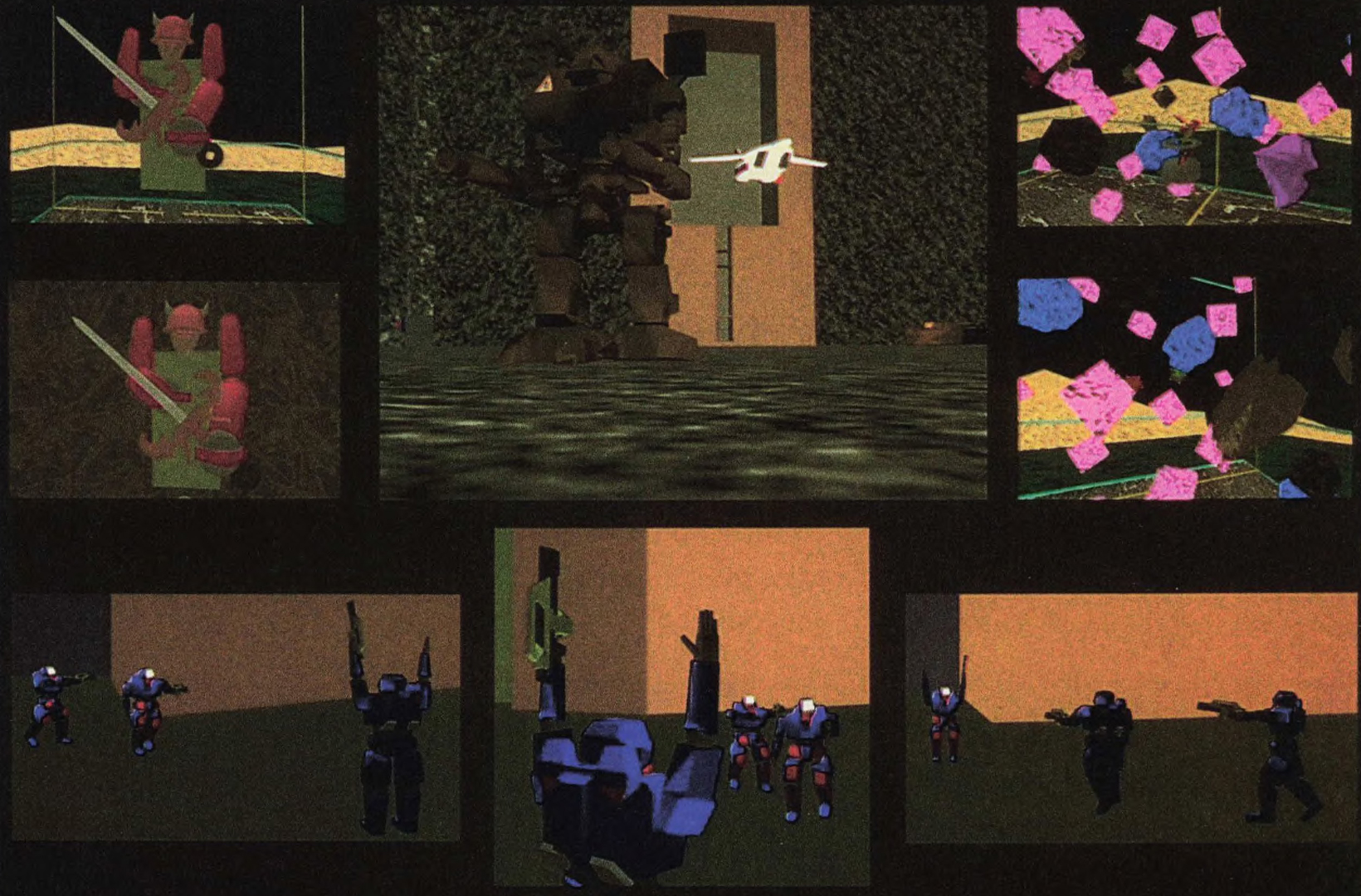“Toy Scout Arcade II” by McLaurin, Kendall, Miller and Davis
Conference:
- SIGGRAPH 1995
-
More from SIGGRAPH 1995:


Type(s):
Entry Number: 11
Title:
- Toy Scout Arcade II
Program Title:
- Interactive Entertainment
Presenter(s):
Collaborator(s):
Project Affiliation:
- Creative Worlds Institute
Description:
- JitalWast, a multiple-player shoot-out featuring the use of data gloves for player input.
- SyberKnight, a more realis- tic look at simulation training, which features highly detailed and articulated models. The player controls one of the models against another player.
- Burning Blades, a sword combat program that emphasizes the fluidity of the players’ model and motion.
- Death Maze, a capture-the-flag-type game set in a maze where players encounter each other as computer-generated players.
The Creative Worlds Institute (CWI), also known informally as the Toy Scouts, is a group of students who volunteer their time to study emerging digital technology. The institute is an ongoing project perpetuated by the students’ drive to push new technologies to their limits.
CWI began in the summer of 1991, when a group of computer science students from the University of Central Florida (UCF) modified a Nintendo Power Glove and sent data to a Silicon Graphics workstation. The group quickly progressed to projects like the Infinite Walk and 3D Space Invaders. During this period, the group also developed hardware such as the VR Swivel Chair, an experiment in telepresence exploration. In the spring of 1992, CWI was invited to demonstrate its Virtual Campus Walkthrough of the UCF campus and its TELEREX (Tele Remote Operated Explorer), a Barbie car fitted with remote controls and a mini-camera.
Following its successful campus demonstration, CWI doubled in size, and the founding members began mentoring the new members of the group. The mentoring process, which involves teaching newcomers the various aspects of VR sound, graphics libraries, and hardware, keeps the group strong and active, and has led to the establishment of a high school branch of CWI.
In 1994, the Toy Scouts appeared for the first time at SIGGRAPH. The group showed a new type of immersive video game employing head-mounted displays, multiple six-dimensional trackers, and six-dimensional sound to immerse the player in a simulated reality. Using Silicon Graphics workstations, SGI Performer, World Toolkit, and custom software, the Scouts have pushed the level of immersion even higher, using texture maps to add more realism to the simulations and adding more track points on the body to generate a more realistic map of the players’ movements. They have also networked the games to create a common environment that can be shared by competing players.
New Games
For SIGGRAPH 95, CWI has produced four games:
Gesture recognition controls the highly articulated player models through six trackers located at key points on each player’s body.
All of these games feature the Scouts’ unique six-dimensional sound interface and immerse players through seamless interfaces.
Basic Functionalities
Auratron is a six-dimensional sound system that allows the game to spatially locate sounds. It is a non-CPU- intensive system on a PC serially linked to the main system. The PC calculates all of the volume intensities required on each speaker and then plays them.
While implementation of the network varies from game to game the overall concept is the same, to allow players to interact with the simulation environment and each other. CWI has found that these games are much more entertaining when played against another human player.
Serial sensors, such as the Polhemus Fastrak or Ascension Flock of Birds, are essential for tracking the motion of the players. All of the games use custom serial drivers for interfacing with a particular sensor. These drivers provide an interface that allows CWI to deal with calibration and response issues required for real-time interaction.
Data gloves help provide an intuitive interface for use inside the VR worlds. Without the Data gloves, the VR worlds would have to be manipulated with more traditional devices such as joysticks.
Potential Future Impact
The application of full-body motion, which provides a quick and intuitive interface, combined with the heightened reality of spatially located sound is relatively new to real- time simulation and VR environments. With this combination, throwing, ducking, grabbing, and spinning become common motions inside the VR environment, and spatially located sounds bring VR closer to imitating the real world. When the applications are networked together, the VR environment becomes a shared space that can be manipulated by multiple users.
The techniques developed by CWI have many commercial applications. The routines developed for full-body motion tracking can be used for better data acquisition. The calibration required for games can be used to promote data visualization and manipulation. Combining the calibration techniques along with the ability to network multiple users into the environment means that data can now be viewed and manipulated graphically by several people in a more intuitive manner.




